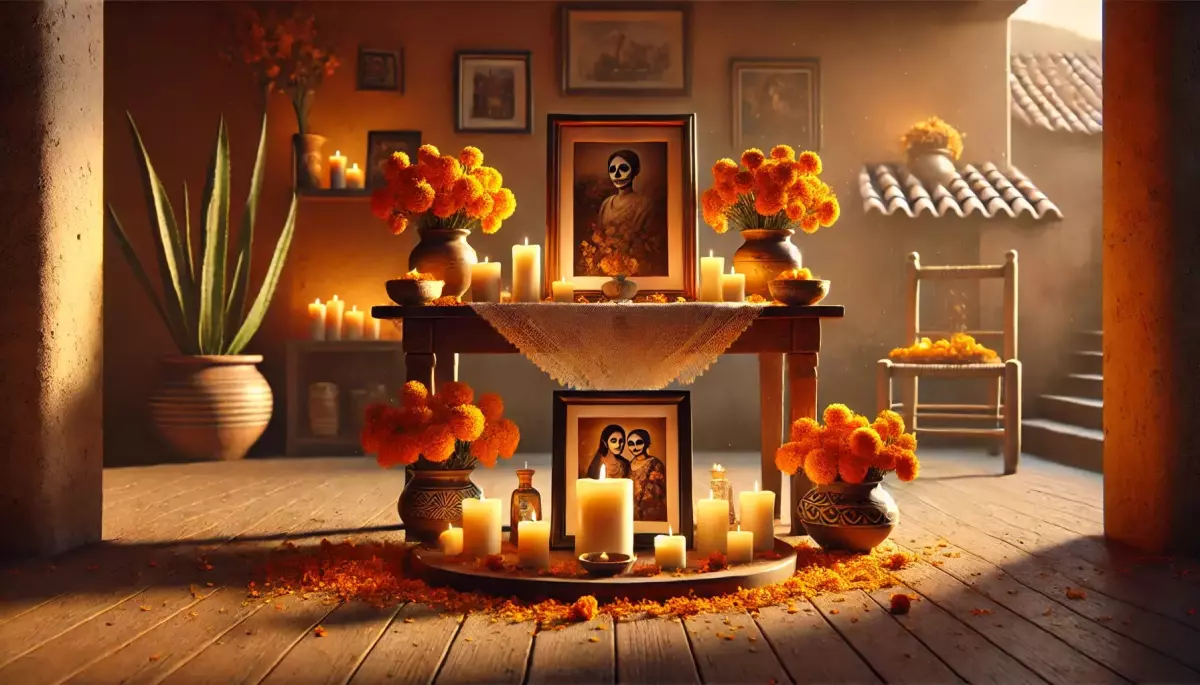Day of the Dead in Mexico is a celebration rich in traditions and meanings. On this day, families come together to honor and remember their loved ones who have passed away, uniting in a ritual that transcends mourning. The date is marked by festivities, prayers, and the decoration of altars with offerings, symbolizing the connection between the living and the dead. This cultural practice is a reflection of the deep reverence that Mexicans have for memory and life after death.
The celebration is a unique opportunity to reflect on life, retrieving memories and strengthening family bonds in a context of respect and love. The cultural impact of the Day of the Dead is evident in various artistic manifestations, gastronomy, and in every detail that makes up this special date. Thus, it is essential to understand how these traditions shape Mexican identity and perpetuate the memory of those who have already passed.
Origin and Meaning of the Day of the Dead in Mexico
The Day of the Dead, known in Mexico as "Día de los Muertos," has deep roots that date back to the indigenous civilizations that inhabited the territory before the arrival of Europeans. This celebration is a fusion of pre-Columbian traditions and Catholic influences, resulting in a unique festivity that honors the memory of the deceased. The date is mainly celebrated on November 1st and 2nd, corresponding to All Saints' Day and All Souls' Day, respectively. This time is seen as a moment when the dead return to the world of the living to reunite with their families, creating a connection between the two worlds.
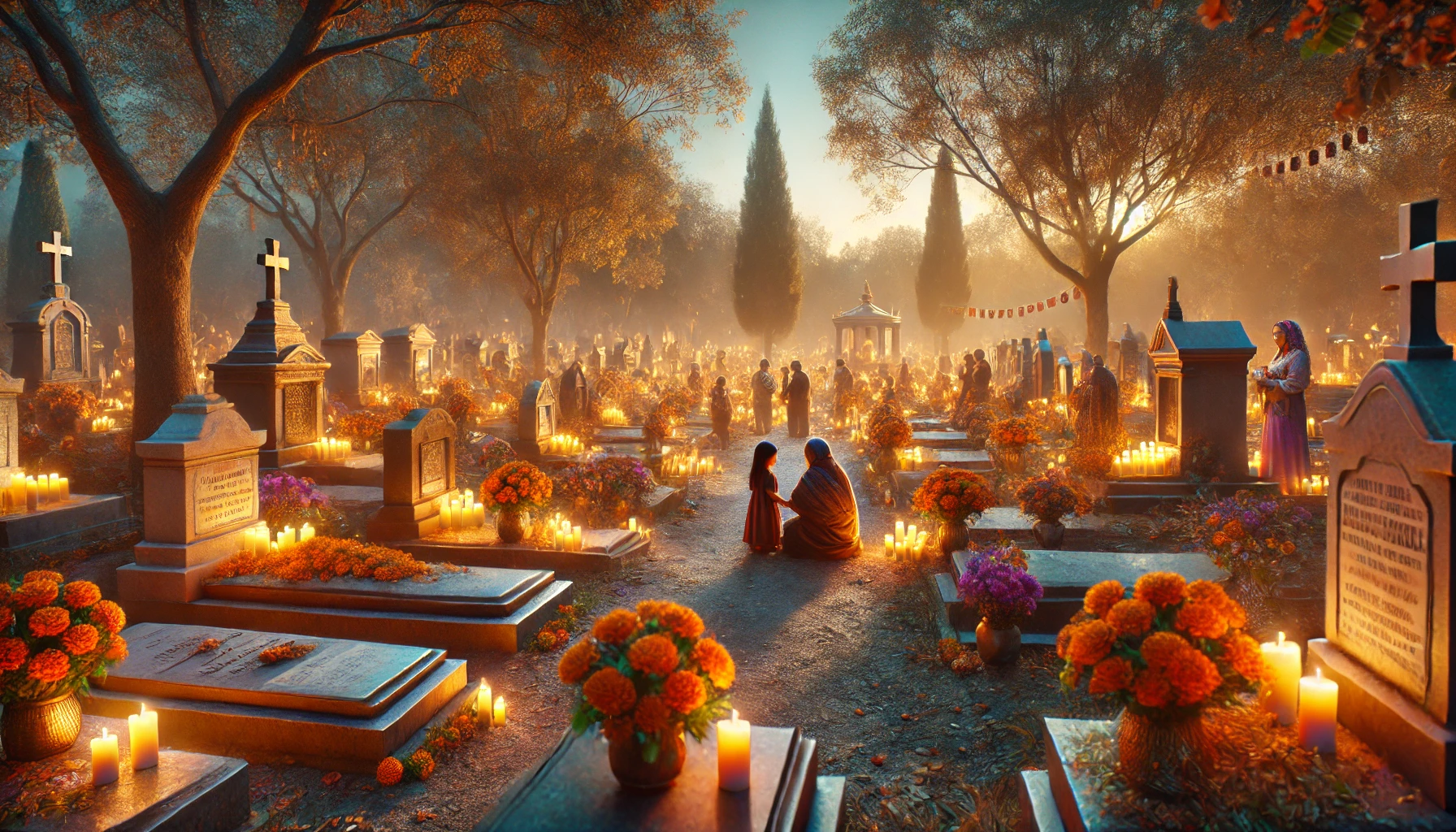
The cultural importance of the Day of the Dead in Mexico is undeniable. It reflects the Mexican view of death, which is understood not as an end, but as a continuation of life. The event is a moment of celebration and reflection, where people not only remember their loved ones but also share stories and laughter, creating a festive atmosphere that contrasts with the sadness associated with loss. This perspective allows families to celebrate the lives of those who have passed away, perpetuating their memories through traditions that are passed down from generation to generation.
Recognized by UNESCO as Intangible Cultural Heritage of Humanity, the Day of the Dead highlights the uniqueness of Mexican culture. The celebration includes elements such as decorated altars, typical food, and traditional dances, translating into a vibrant spectacle that attracts both locals and tourists. The significance of this day goes beyond mere homage; it represents a deep bond between generations and a healthy way to cope with death, celebrating life instead of mourning loss.
👉 Download the Calendar for 2025
Full Calendar of Day of the Dead until 2050
Next Event
New Year - 01/01/2026| Year | Next Date |
|---|---|
| Day of the Dead in 2025 | 11/02/2025 |
| Day of the Dead in 2026 | 11/02/2026 |
| Day of the Dead in 2027 | 11/02/2027 |
| Day of the Dead in 2028 | 11/02/2028 |
| Day of the Dead in 2029 | 11/02/2029 |
| Day of the Dead in 2030 | 11/02/2030 |
| Day of the Dead in 2031 | 11/02/2031 |
| Day of the Dead in 2032 | 11/02/2032 |
| Day of the Dead in 2033 | 11/02/2033 |
| Day of the Dead in 2034 | 11/02/2034 |
| Day of the Dead in 2035 | 11/02/2035 |
| Day of the Dead in 2036 | 11/02/2036 |
| Day of the Dead in 2037 | 11/02/2037 |
| Day of the Dead in 2038 | 11/02/2038 |
| Day of the Dead in 2039 | 11/02/2039 |
| Day of the Dead in 2040 | 11/02/2040 |
| Day of the Dead in 2041 | 11/02/2041 |
| Day of the Dead in 2042 | 11/02/2042 |
| Day of the Dead in 2043 | 11/02/2043 |
| Day of the Dead in 2044 | 11/02/2044 |
| Day of the Dead in 2045 | 11/02/2045 |
| Day of the Dead in 2046 | 11/02/2046 |
| Day of the Dead in 2047 | 11/02/2047 |
| Day of the Dead in 2048 | 11/02/2048 |
| Day of the Dead in 2049 | 11/02/2049 |
| Day of the Dead in 2050 | 11/02/2050 |
Mexican Traditions and Customs in the Celebration
The traditions of the Day of the Dead in Mexico are rich and varied, reflecting the cultural diversity of the country. One of the most common practices is the setting up of altars in honor of the deceased, known as "ofrendas." These altars are decorated with photos, candles, food, and other items that the deceased enjoyed in life. It is believed that these elements help guide the spirits back home, where they can be warmly welcomed by their families. Thus, setting up the altar becomes an act of love and respect, where every detail is carefully chosen.
👉 Download the Calendar for 2025

Another striking tradition is the visit to cemeteries, which becomes a community event. Families gather to clean and decorate the graves, often spending hours talking and sharing stories. This practice is not only a demonstration of respect but also an opportunity to strengthen family and community bonds. The cemeteries, during this period, transform into vibrant places, filled with flowers, music, and laughter, reflecting the celebration of life.
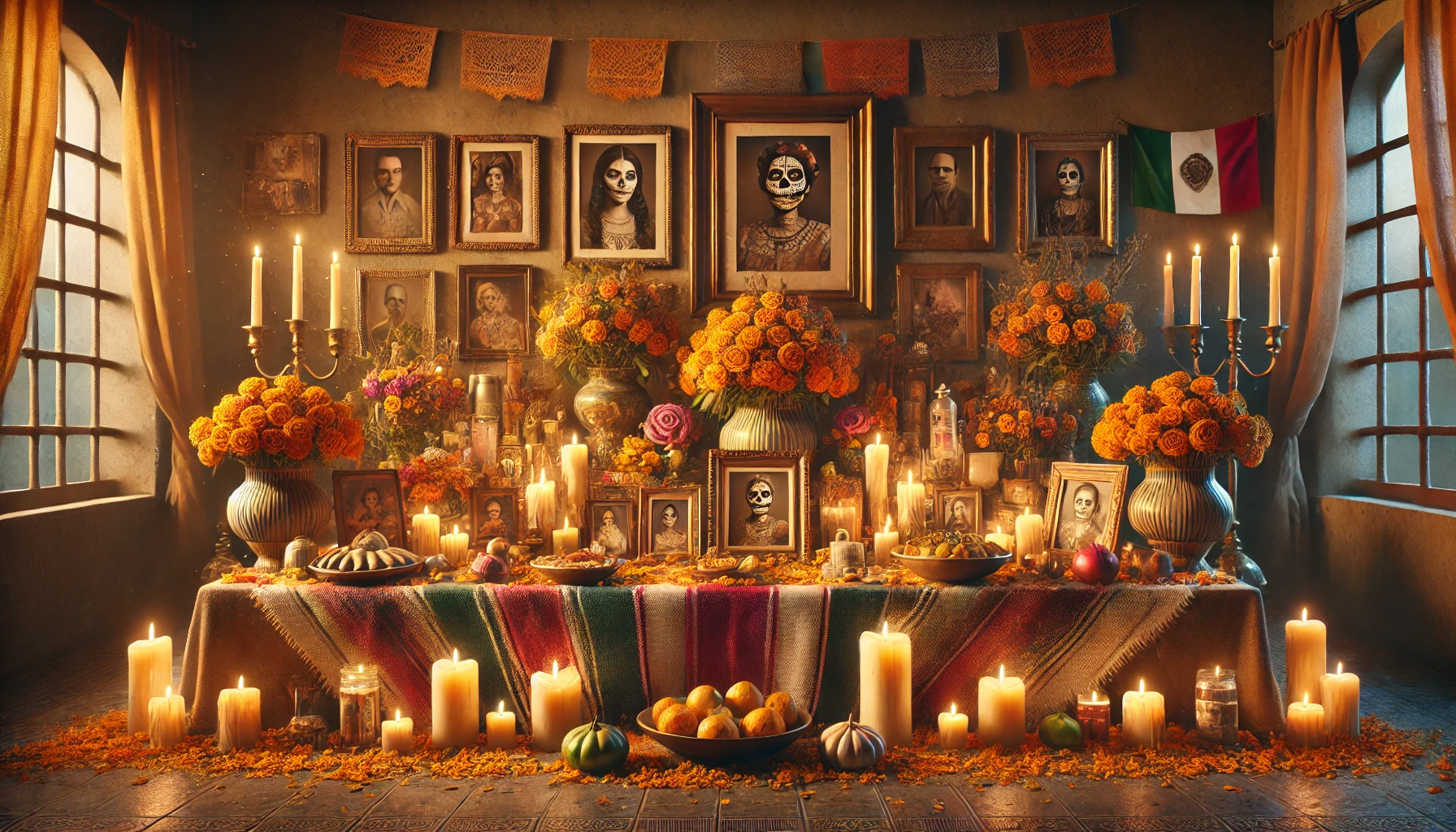
Dancing and music also play a crucial role in the Day of the Dead festivities. Groups of dancers and musicians perform in various locations, bringing joy and excitement to the celebration. Folk dances, such as the "Danza de los Viejitos", are particularly popular, symbolizing the connection between the living and the dead. Through these artistic expressions, Mexican culture demonstrates its resilience and the ability to honor the memory of those who have passed in a vibrant and festive manner.
Day of the Dead Altars: Meaning and Setup
The Day of the Dead altars, or "ofrendas", are a fundamental part of the celebrations. They vary in size and complexity, but all have a common purpose: to honor the deceased and welcome them back home. The setup of an altar is a ritual that involves the careful selection of each item, reflecting the personality and tastes of the loved one. Altars typically include photos, candles, food, and personal items that represent the life of the deceased.
The use of flowers, especially the "cempasúchil" or flower of the dead, is a striking feature of the altars. These flowers have a symbolic meaning, as it is believed that their scent guides the spirits to the altars. Moreover, the candles represent the light that illuminates the path of the deceased, while photos and personal objects serve as reminders of shared memories. The arrangement of items on the altar follows a logic that blends indigenous and Catholic beliefs, creating a sacred space that celebrates life and death.

Setting up an altar is a collective activity that involves the whole family. This practice not only strengthens family bonds but also educates new generations about the importance of memory and respect for those who have passed away. The setup process is, therefore, a way to transmit cultural values and keep tradition alive. In the end, the altar becomes a reflection of the lives and stories of the deceased, serving as a space for remembrance and celebration.
Typical Foods of the Day of the Dead in Mexico
Gastronomy plays an essential role on the Day of the Dead, with specific dishes that have symbolic meanings. One of the most emblematic foods is "pan de muerto", a sweet bread that is often shaped like a skull or bones. This bread is made with simple ingredients, but its preparation involves traditions that are passed down from generation to generation. The "pan de muerto" is placed on altars as a way to offer to the spirits, symbolizing abundance and the continuity of life.
👉 Download the Calendar for 2025
In addition to "pan de muerto", other typical foods include tamales, mole, and seasonal fruits, which are also placed on altars. Each dish has its own symbolism, representing family unity and the celebration of life. For example, tamales are often associated with sharing and togetherness, while mole is a dish that requires time and dedication to prepare, symbolizing love and respect for the deceased. These foods are not only offered to the spirits but also consumed by families during the celebrations.
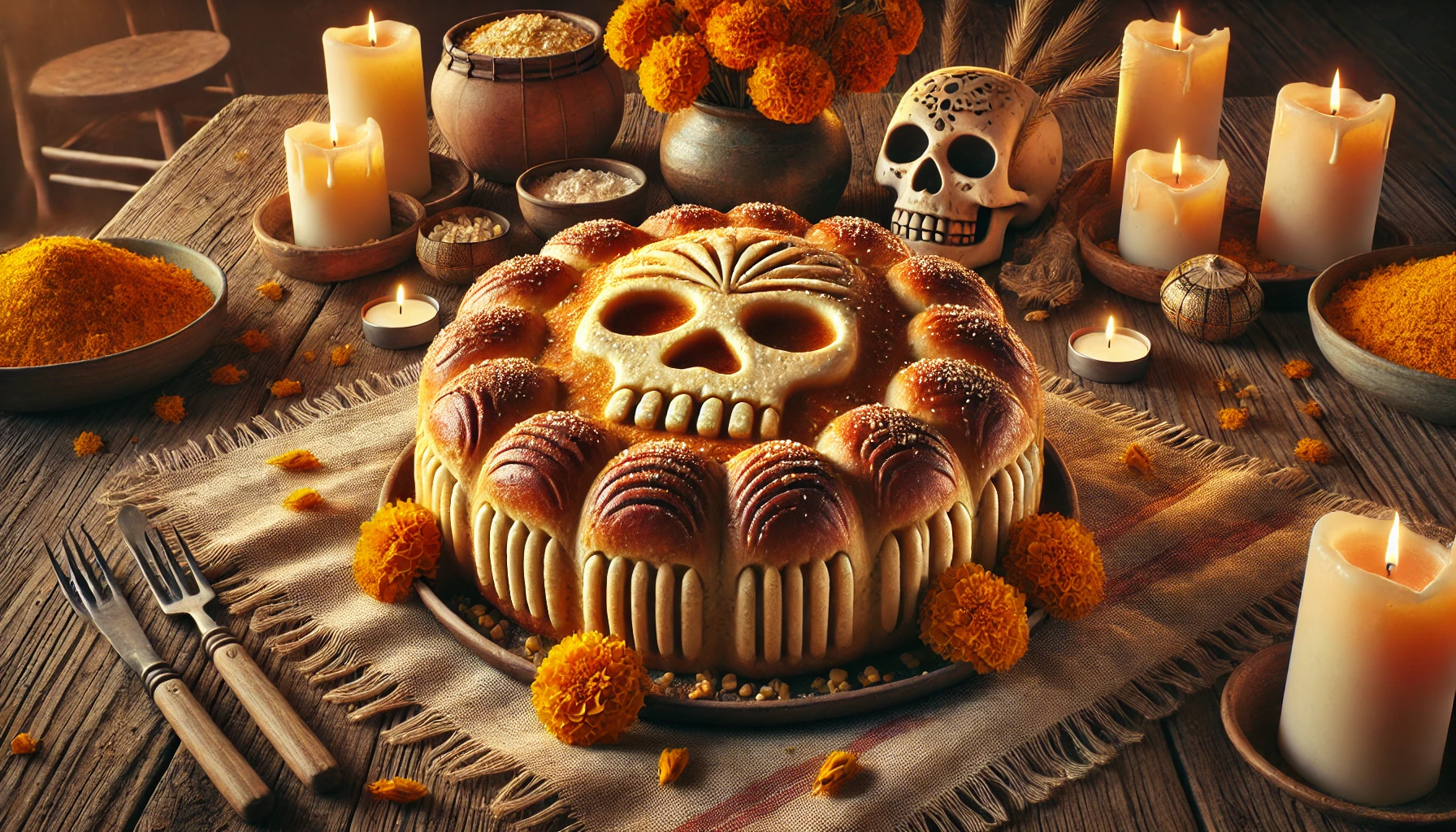
The sharing of food during the Day of the Dead is a form of union and celebration. Families gather around the table to remember and celebrate the lives of those who have passed away, creating a warm and welcoming atmosphere. This practice not only nourishes the body but also the spirit, reinforcing bonds and sharing stories that keep the memory of loved ones alive. Food, therefore, is a vital part of the celebration, uniting generations in a ritual of love and respect.
The Importance of Flowers in the Celebration
Flowers hold a central place in the festivities of the Day of the Dead in Mexico, especially the "cempasúchil" or flower of the dead. With their vibrant colors, ranging from yellow to orange, these flowers are used to decorate altars and graves, creating a festive and welcoming atmosphere. In addition to their beauty, the "cempasúchil" has a deep symbolism: it is believed that its aroma guides spirits to the altars, facilitating the reunion with the living.
The use of flowers goes beyond decoration; they represent the fragility of life and the inevitability of death. The life cycle of flowers, which bloom and wither, mirrors the cycle of human life. The tradition of using flowers in the celebration is a way to remember that, just like flowers, loved ones are also part of this cycle. Families often create elaborate arrangements and, in some regions, even create flower paths leading to the altars, symbolizing the welcoming of spirits.
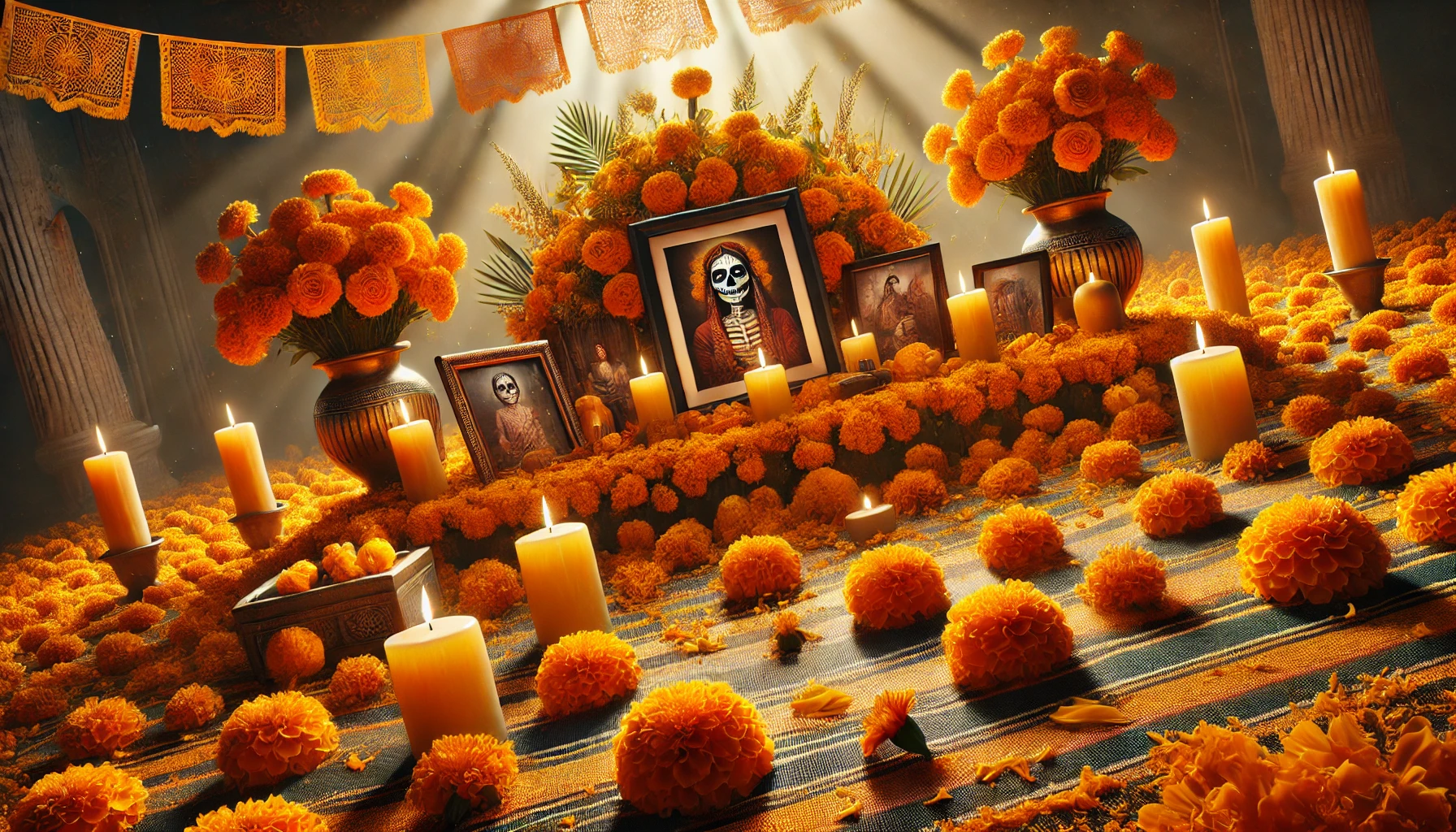
In addition to the "cempasúchil", other flowers are also used during the celebrations, such as the rose and the lily. Each flower carries its own particular symbolism and fits into the narrative of the celebration. The use of flowers not only beautifies the environment but also serves as a constant reminder of the beauty of life and the importance of celebrating those who have already passed. Thus, flowers become a link between the living and the dead, a way to keep the memory and love that endures alive.
Religious Rituals and Ceremonies Associated
Most festivities are marked by masses and religious services that honor the deceased. Churches are often filled with worshippers seeking to remember and pray for their loved ones. These ceremonies not only strengthen faith but also provide a space for reflection and family unity.
👉 Download the Calendar for 2025
In addition to the masses, many Mexicans perform individual rituals at home. Lighting candles, praying, and meditating are common practices that help in the spiritual connection with those who have passed away. Families often create a sacred environment in their homes, where they can gather to remember and honor the memory of the deceased. These moments of introspection are crucial for the grieving process and celebration of life, allowing the living to feel closer to those who have already gone.
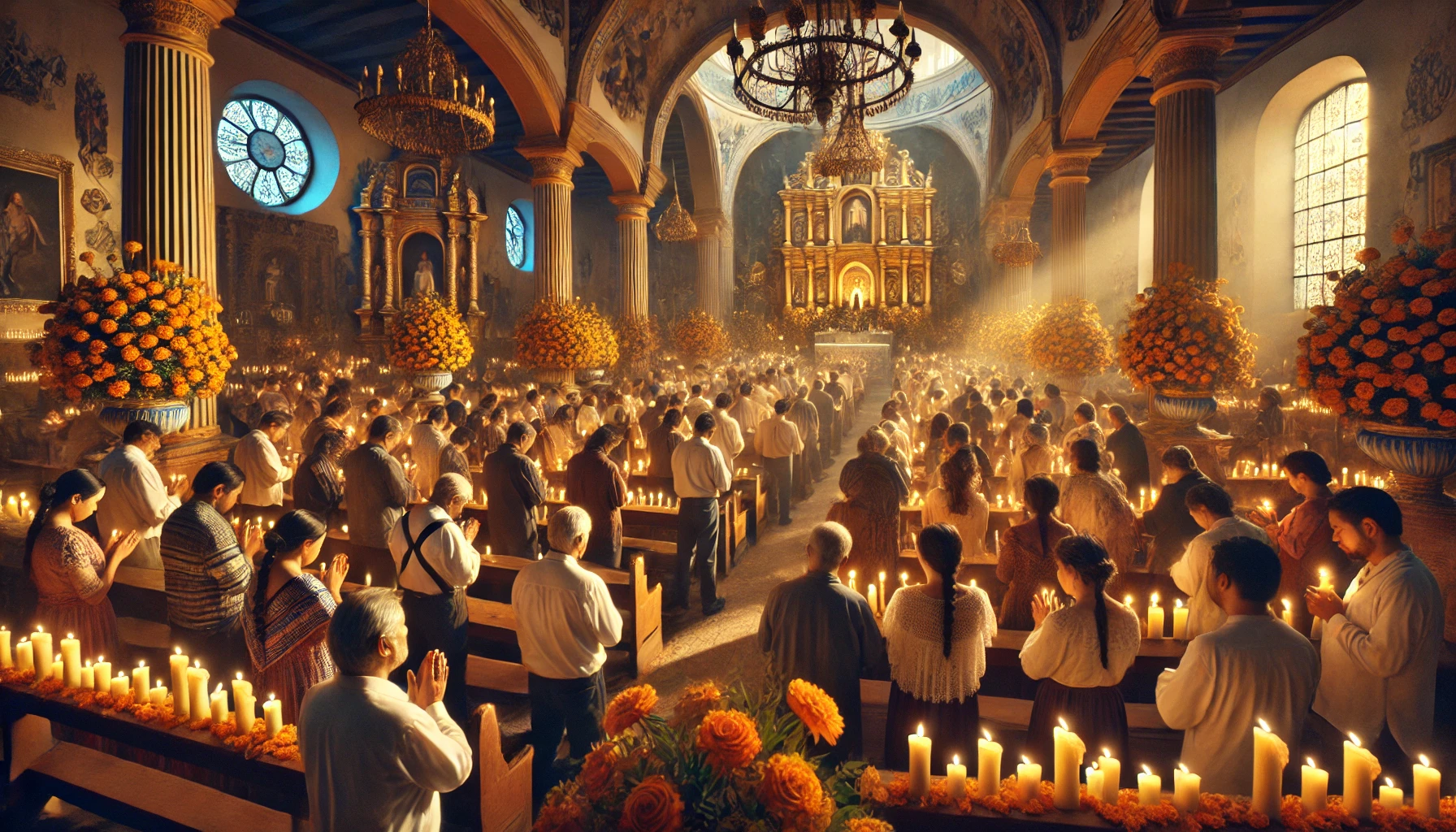
The celebration of All Souls' Day is also an opportunity for communities to unite around their religious traditions. Many localities organize community events that include dances, music, and performances that portray life and death in a respectful and joyful manner. These activities strengthen the social fabric and create a sense of belonging, demonstrating that the celebration of life and death is a shared experience by all. Thus, religious rituals intertwine with cultural traditions, forming a rich tapestry of meaning and celebration.
Final Considerations
Day of the Dead in Mexico represents a unique fusion of indigenous traditions and Catholic influences, creating a rich celebration full of meanings. This special date goes beyond mere remembrance of deceased loved ones; it symbolizes the ongoing connection between the living and the dead. Thus, this festivity becomes a moment of reflection and tribute, essential in Mexican culture.
The importance of the commemorative event is reflected in the various traditions that surround it, such as the construction of altars and the preparation of typical foods. Moreover, the festivities are a means of strengthening family and community bonds, promoting unity among generations. Consequently, the Day of the Dead transforms into a vibrant celebration of love and memory.
Finally, the cultural impact of the Day of the Dead transcends borders, influencing other cultures and festivities around the world. This event, full of symbolism and practices, teaches the importance of remembering and honoring those who have passed away. Therefore, understanding the traditions and origins of this celebration is fundamental to appreciating the rich cultural heritage of Mexico.
